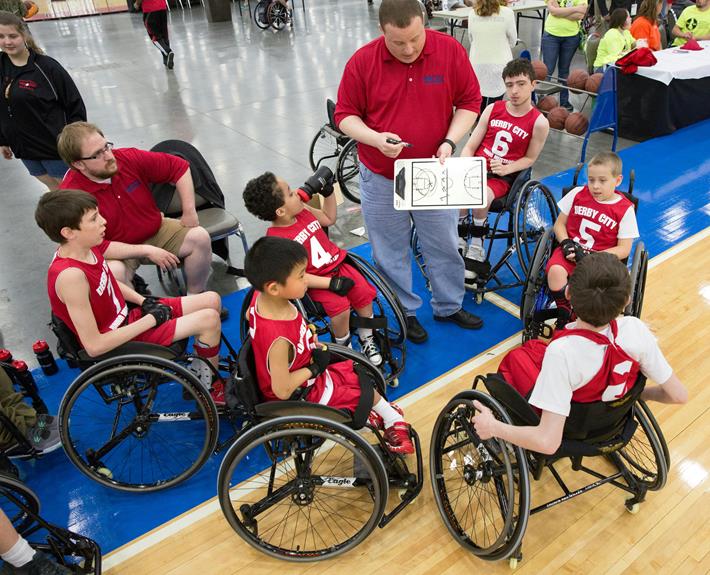10 Best Vertical Jump Metrics for Basketball Players
Enhance your basketball skills with these top ten vertical jump metrics tailored for maximizing your performance on the court. Utilize the Vertical Jump Test to measure your explosive leg power essential for various aspects of the game.
Focus on metrics like Peak Power and Reactive Strength Index to assess your power output and ability to utilize the stretch-shortening cycle efficiently. Evaluating your Jump Height to Body Weight Ratio and practicing proper landing techniques can enhance your dunking and shot-blocking capabilities.
Understanding and monitoring these metrics can greatly improve your athletic prowess and competitive edge in basketball.
Key Takeaways
- Vertical Jump Height Measurement crucial for assessing explosive power and leaping ability.
- Power Output Assessment key for customizing training programs and improving performance.
- Reactive Strength Index Evaluation indicates power generation efficiency for tailored training.
- Jump Height to Body Weight Ratio reflects power-to-weight efficiency in vertical jumping.
- Landing Force Absorption Testing essential for injury prevention and lower-body stability in basketball.
Importance of Vertical Jump Metrics
Understanding the significance of vertical jump metrics is essential for evaluating a basketball player’s explosiveness and leaping ability. The Vertical Jump Test is an important tool that measures explosive leg power, a key component for basketball performance.
For basketball players, having strong leg muscles translates to improved performance in areas like rebounding, shot-blocking, dunking, and defensive maneuvers. These metrics aren’t just numbers; they reflect the effectiveness of training programs and overall athletic progress.
By tracking vertical jump height regularly, coaches and players can monitor the development of lower-body strength and speed-strength qualities. Utilizing these metrics provides valuable insights into an athlete’s agility, scoring efficiency, and competitive advantage on the basketball court.
Vertical Jump Height Measurement
Measuring vertical jump height is a critical assessment for determining an athlete’s explosive power and leaping ability in basketball. Vertical jump testing is a fundamental tool that provides insight into a player’s lower-body strength and overall athletic performance.
In basketball, the ability to jump high is directly related to success in rebounding, shot-blocking, and dunking on the court. Coaches and players utilize vertical jump measurement to track improvements in speed-strength development over time.
To achieve top-notch results, it’s crucial to focus on proper technique and implement effective training strategies that target lower-body strength.
By honing in on vertical jump height through targeted workouts and form adjustments, basketball players can enhance their athleticism and on-court capabilities to a great extent.
Power Output Assessment
To further analyze and optimize your vertical jump performance, evaluating power output metrics such as peak power, average power, and rate of force development is crucial.
Understanding these metrics provides valuable insights into your explosive strength and jump performance.
Here are some key points to ponder:
- Peak Power: Indicates the maximum power output achieved during a vertical jump, showcasing your ability to exert force quickly.
- Average Power: Reflects the mean power output generated throughout the entire jump, offering a holistic view of your performance.
- Rate of Force Development: Measures how swiftly you can increase force production, impacting the speed and efficiency of your jump.
- Explosive Strength: Demonstrates your capability to generate maximal force in minimal time, essential for achieving higher vertical jump heights.
- Tailored Training: Utilize power output data to customize training programs specifically aimed at enhancing your vertical jump technique and overall performance.
Reactive Strength Index Evaluation
When assessing the Reactive Strength Index (RSI) for basketball players, consider the calculated ratio of jump height to ground contact time during jump tests.
RSI evaluation is important as it evaluates how effectively an athlete utilizes the stretch-shortening cycle for explosive movements. A higher RSI indicates superior reactive strength and the ability to generate power quickly during dynamic actions on the court.
Coaches use RSI measurements to customize training programs that specifically target improving the athlete’s ability to produce rapid force, thus enhancing performance. Monitoring changes in RSI over time is necessary as it tracks advancements in an athlete’s reactive strength, which is essential for excelling in basketball.
Incorporating RSI assessments into training routines can lead to significant improvements in overall athletic ability.
Jump Height to Body Weight Ratio
How can a basketball player’s jump height to body weight ratio impact their performance on the court?
Evaluating the jump height to body weight ratio is essential for understanding a player’s vertical jump efficiency and power-to-weight ratio. Here are some key points to ponder:
- The ratio helps determine how effectively a player can propel their body weight off the ground during a jump.
- A higher jump height to body weight ratio indicates better power-to-weight efficiency in vertical jumping.
- This metric is vital for skills like dunking, shot-blocking, and overall explosiveness in basketball.
- Monitoring and improving this ratio can lead to enhanced performance on the court.
- Regular jump height assessments can help track progress and identify areas for improvement in vertical jump performance.
Force Plate Analysis
Using force plate analysis provides basketball players with valuable insights into their vertical jump mechanics and performance.
This analysis measures ground reaction forces, offering detailed data on force production, contact times, and jump kinetics. It helps evaluate power output, rate of force development, and any asymmetries in jump performance.
Coaches utilize this information to tailor training programs for optimizing vertical jump performance, guiding athletes in enhancing their jump mechanics and explosive power.
Below is a table summarizing key aspects assessed through force plate analysis:
| Aspect | Description |
|---|---|
| Ground Reaction Forces | Measure forces exerted on the ground during a jump |
| Power Output | Evaluate the amount of power generated during a jump |
| Jump Kinetics | Analyze the motion characteristics of the jump |
| Rate of Force Development | Assess how quickly force is generated during the jump |
| Asymmetries | Identify any imbalances in force production between limbs |
Eccentric Vs Concentric Strength
Developing both eccentric and concentric strength is essential for enhancing vertical jump performance in basketball players. When it comes to maximizing your vertical jumps, understanding the importance of eccentric strength and concentric strength is key.
Here are some critical points to keep in mind:
- Eccentric strength aids in controlling movements during muscle lengthening, important for landing and absorbing impact effectively.
- Concentric strength is essential for generating power and explosiveness during actions like jumping.
Both eccentric and concentric strength are necessary for optimizing force production and absorption in vertical jumps.
- Eccentric strength helps in lowering your body into the jump position efficiently.
- Concentric strength enables the explosive extension required to propel your body upwards in a vertical jump.
Optimal Takeoff Speed Examination
To maximize your vertical jump height in basketball, understanding the significance of ideal takeoff speed is paramount. Research suggests that a takeoff speed ranging from 1.75 to 2.25 m/s is optimal for achieving peak performance in vertical jumps.
By consistently practicing and training to hone this crucial aspect, basketball players can significantly enhance their jumping ability. Monitoring and adjusting takeoff speed according to individual player characteristics can lead to improved vertical jump metrics and overall performance on the court.
It is essential to grasp the relationship between takeoff speed and jump height, as mastering this connection is key to optimizing your performance in basketball.
| Vertical Jump Height | Takeoff Speed (m/s) | Optimal Performance | Training |
|---|---|---|---|
| High | 1.75-2.25 | Enhanced ability | Consistent practice |
Landing Force Absorption Testing
Understanding the importance of landing force absorption testing is essential for basketball players looking to enhance their performance and prevent injuries.
This type of testing evaluates how well you can absorb impact when landing, focusing on your ability to control and dissipate force effectively.
By evaluating your lower-body stability and control, landing force absorption testing plays an essential role in injury prevention.
The results obtained from this testing can pinpoint areas for improvement in your landing mechanics and strength.
Developing proper techniques to absorb landing forces not only enhances your performance but also reduces the risk of lower-body injuries, making it a critical aspect of training for basketball players.
- Impact absorption
- Lower-body stability
- Injury prevention
- Landing mechanics
- Basketball players
Rate of Force Development Assessment
Evaluating the Rate of Force Development (RFD) in basketball players provides valuable insights into their explosive power capabilities during vertical jumps. RFD measures how quickly a player can generate force, which is essential for explosive movements on the court.
Coaches and trainers use RFD assessments to design tailored strength and power training programs that enhance a player’s ability to jump higher and with more power. Higher RFD values indicate greater explosive strength, contributing to swift and forceful actions during games.
Monitoring improvements in RFD over time helps track the effectiveness of training interventions aimed at boosting vertical jump performance in basketball players. By focusing on RFD, players can work on developing the explosive power needed to excel in their vertical jump skills on the basketball court.
Frequently Asked Questions
Is a 25 Inch Vertical Good?
A 25-inch vertical jump is good, showing decent lower-body power and explosiveness. For amateur players, it’s solid. Pros often jump over 30 inches. Enhancing your jump can boost performance in basketball.
How Do NBA Players Measure Their Vertical?
To measure your vertical jump like NBA players, you jump as high as you can using equipment like Vertec or force plates. The process determines your maximum vertical leap, recorded in inches, aiding in evaluating your explosive power.
Is a 21 Inch Vertical Good?
Feeling like you’re reaching for the stars with a 21-inch vertical jump? Well, that’s below average. To soar on the basketball court, aim for verticals in the 28-34 inch range for peak performance.
What Is Zion Williamson Vertical Leap?
You asked about Zion Williamson’s vertical leap. It’s an impressive 45 inches, showcasing his elite athleticism. His ability to jump high contributes greatly to his dominance on the basketball court, making him a force to reckon with.
Conclusion
To wrap up, one interesting statistic to ponder is the Reactive Strength Index (RSI), which measures an athlete’s ability to quickly transition from an eccentric (lengthening) to a concentric (shortening) muscle contraction during a jump.
A high RSI indicates efficient use of elastic energy, allowing for powerful and explosive movements on the basketball court.
By monitoring and improving these vertical jump metrics, basketball players can enhance their performance and agility on the court.
















